|
(1)Encounters and Learning
(2)The State of Handicraft
(3)”Life with Japanese beauty”
(4)Activity theme
(5)Activity plan
This time, the net shop of "The specialized in handwork in the Tohoku region of Japan " has been launched. Everything has become an "amateur's goods
shelf" of handmade products.
I have been working as a hotelier for 30 years from Nippon View Hotel Co.
in Tochigi Prefecture (Nasu View Hotel), Aomori Prefecture (Hoshi to Mori
no Romantopia Soma) and Fukushima Prefecture (Abukumadou Hatori-ko Kogen
Regina no Mori). I was born and raised in Tochigi Prefecture and was able
to get to know the people of the Shimonoteshigoto association through the
planning of the hotel.
In particular, Mr. Toshio Ojima (former head of the curatorial department
of the Tochigi Prefectural Museum), who was an advisor and helped establish
the museum, taught me about the world of traditional crafts and folk art,
as well as folk performing arts." I have heard him say, "People
who lived pure, poor, and beautiful" many times.
 
●Nasu View Hotel ●Commemoration of Dr. Toshio Ojima's retirement
(Mr. and Mrs. Ojima)
 
●Hoshi to Mori no Romantopia Soma ●Abukuma-dong
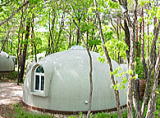 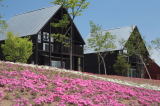
●Lake Hatori Kogen Regina no Mori (Atrio Orsa)
Now, the handicraft industry (traditional crafts and folk art) is on the
verge of extinction. From global market economism, any industry that is
unsuitable for modern life is doomed to be weeded out.
Biologically, there is a term "endangered species," and that
is exactly what traditional crafts are in. The production of Tsugaru-lacquerware
and Aizu-lacquerware, which I was involved in, and the people involved
in the production are now a fraction of what they used to be. The technology
of traditional industries, which began in the Edo and Yamato eras, is fading
away. Once it is gone, it seems to me that it will never be revived again.
■Handicraft in the Shimono region ■Handicraft in Aizu ■Handicraft in Tsugaru Region
■OBM Hand crafts
----Typical handwork----
  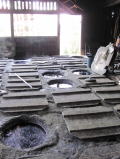 
●Nikkou geta ●tortoiseshell work ●indigo dyeing
(Japanese footwear)
  
●Karasuyama Japanese paper ●Koisago ware ●Aizu lacquerware
  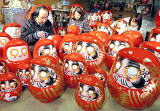
●Aizu Pictured Candle ●Aizu cotton (cloth) ●Shirakawa Daruma (god of wealth)
 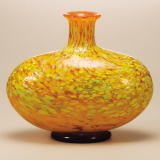 
●Tsugaru Kanayama ware ●Tsugaru Vidroid (Hokuyo Glass Co.) ●BUNACO
 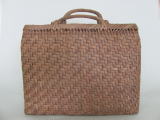 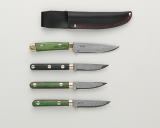
●Tsugaru kogin zasi ●Akebi vine work ●Tsugaru Forged Knives
(small cloth embroidery)
 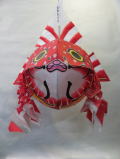 
●Shitakawara ware clay figurines ●Tsugaru kite art ●Tsugaru sakiori weave
  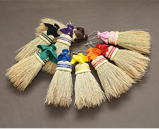
●Tsugaru lacquerware ●Bentwood ●Nambu(Southern)Broomstick
Even though we know the importance of slow life and products made from
natural materials, we still find it difficult to use them economically
in our lives.
Therefore, we propose "Life with Japanese beauty" with the aim of preserving the traditional industry "handwork" and returning to a human life. We are advocating the use of Japanese traditional products and ways of life as "Wa" (harmony) and beauty as the wisdom of arts and crafts and ways of life that have been nurtured in our ancient lives as "beauty" in our daily lives.
The Japanese aesthetic sense of color and form is something that we are proud of in the world, and has been nurtured and passed down over the years by both the makers and users of these products.
Those nurtured in the world do not produce anything more conventional. There is value in the finished beauty that has been created and cultivated over the years through the repetitive work of artisans.
Other traditional Japanese industries and cultures, such as Ryokan (Japanese
inn), kappo(Japanese cooking), kimono, ease(fortune-telling), kado(flower
arrangement), and tea ceremony, are also useful and possess warmth and
beauty at the same time.
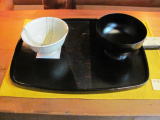  
  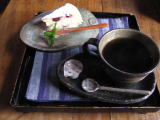
This time, I was able to start from 28 workshops of 21 industries from
Shimotsuke region, 7 workshops of 3 industries from Aizu, 1 workshop of
1 industry from Yonezawa city, and 15 workshops of 10 industries from Tsugaru region,
which I have been involved in.
It is the mission of the "artisans" who are involved in handwork to make products that can be applied to modern life. This means capturing the needs and wants of consumers and creating artworks that respond to them. Since ancient times, people have had the spirituality of truth, goodness and beauty, and consumers also have these as their desires. We also need a third person to build a bridge between the people who make and use these things and to create new products.
I will act as a third person, acting as a bridge between the two.
(1) Campaign "Special Price Sales" of seasonal handicraft products.
(2)Planning of a "tour of workshops" for members of the Handicraft
Department "friends'association". Specifically, each of the three
regions, Shimotsuke, Aizu, and Tsugaru, was planned as a trip. There will
also be a concert using the workshop and a get-together between the workshop
artisans and members of the Tomo no Kai. You can choose to participate
in a day trip or an overnight stay.
(3) Introduce and sell hands-on gifts. We will introduce and sell the experience
of making atelier as a gift.
4) I learned from my three years of experience at WebCite that information
dissemination is the key.That's what "branding" means. In other
words, the individual value of the commodity. DMD (The difference make
the difference)" is in vogue. I have learned that this pursuit is
the key. This will be my second start in 2014. We will conduct this information
dissemination activity thoroughly. Discovering new and buried information,
we have created a modern. The purpose of this program is to bring it to
life.
5)Activities of REOHAS (REOHAS).
We get involved in our work for the purpose of the global environment and the way we live our lives.
Reohas is a word I coined. It stands for Regional economy of health and
sustainability, which is a regional economy oriented towards health and
sustainability of the planet. LOHAS is a famous word. And what it means
is that it's a great policy of "a healthy and sustainable attitude
to life" in relation to slow food and slow life. My intention is the
same as that of Uruguayan President Muhica, who spoke at the Rio Conference.
And I was inspired
.
(http://hana.bi/2012/07/mujica-speech-nihongo/)
And then there's GMOs (genetically modified foods) and the Fukushima nuclear
accident. It's the awfulness of food and health. Japan's medical expenses
are said to be 37 trillion yen. It's the cost of repairing the nation's
body. And over 60% of people are free of lifestyle diseases. It is the
exhaustion of the local economy, the shortage of labor and the decline
of the community. I wanted to suggest a small local economy as a way to
improve on these things. And that, I believe, will lead to the correction
of the consumerist economy that President Muhica intended. Here are some
of those suggestions I'm still in the process of coming up with the idea.
However, I am confident that it will help us to think about the local economy
going forward.
1) Local production for local consumption
In food and health, the low nutritional value of food due to post-war dietary changes is one of the causes.
In other words, heavy use of inorganic fertilizers and pesticides and accelerated cultivation are the major causes.
On the other hand, fallow land has become the norm in terms of production
adjustment and subsidized production adjustment.
We take for granted the distribution of large, low nutrient value crops.
On the contrary, we can make effective use of resources through local production for local consumption, organic farming, no and low agricultural chemicals, and utilization of fallow land through intra-regional distribution.
This allows for the distribution of fresh food that is good for the body.
Local consumption makes it possible to use and revitalize local supermarkets
as sales destinations.
・Make it possible to utilize the local elderly labor force. It's a regional
version of Kleinegarten, if you will.
・By taking advantage of nutrient-rich foods that are good for the body, medical costs are reduced.
・Awareness of food and health
・Promoting the branding of organic and pesticide-free farmers, restaurants,
lodging facilities, supermarkets, etc.
By giving them a brand, it could be easier to spread them.
2) Welfare measures.
Introduce a volunteer currency system.
Revitalize the community and create a volunteer currency for the elderly and women and use it for specific government services.
This is double the use of silver talent.
It is necessary to consider what kind of products and services to target.
It seems to me that lifelong learning activities and volunteers can be combined.
The introduction of volunteerism into the administration's welfare policy.
3)Energy conservation
Renewable energy responses to electricity.
Promote the development and support of alternative energy in the local economy in an administrative manner.
To conserve energy from sunlight and household power consumption.
Learn from the measures of Germany and Austria.
With regard to infrastructure development, can't we make use of the special zone concept for regional and prefectural governments?
4) Infrastructure development
I think that social improvements are always necessary.
The question is whether it is possible to raise these budgets from the economies in 1) to 3).
(1) Utilization of the difference in medical expenses and health insurance from food and health.
I think it's possible to pay out a significant amount of money over a period of a few years, depending on the size of the local economy.
Use of fallow land and use of fallow land subsidies.
(2) The introduction of a volunteer system to raise costs through the use of the labor force.
It can be used for welfare related expenses.
(3) The revival of the local community will make it possible to create something worth living for. Vacant dwellings in a worm-eaten state can be utilized.
A group home-like form of mutual aid is possible. (Volunteer currency.)
These are my current ideas.
  
■top page □up
|

